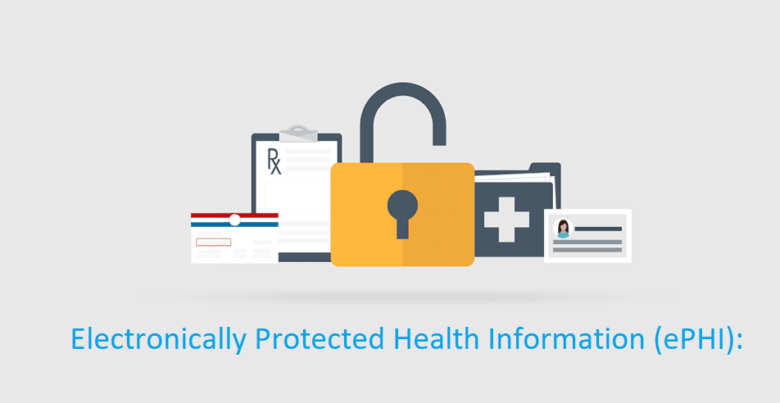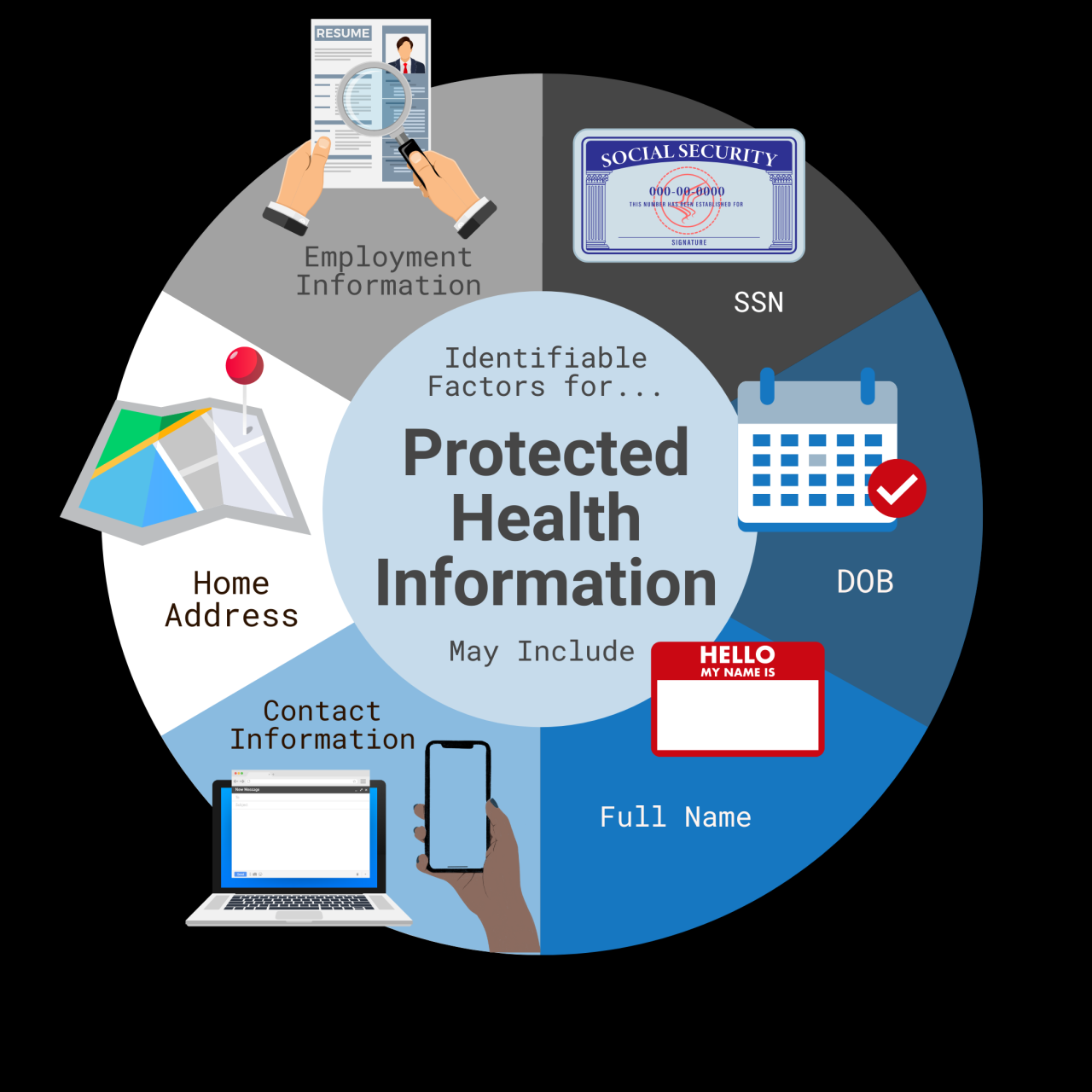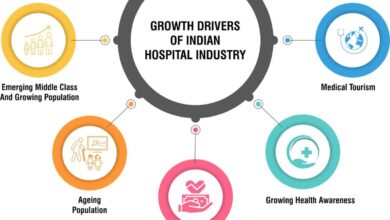
Improving Mobile Healthcare Capabilities Secure ePHI Access
Improving mobile healthcare capabilities secure access to ephi – Improving mobile healthcare capabilities and secure access to ePHI is more critical than ever. The rise of telehealth and mobile health apps has revolutionized patient care, offering convenience and accessibility. However, this progress brings significant challenges: ensuring the privacy and security of sensitive patient data (ePHI) while simultaneously enhancing app functionality and data interoperability. This post delves into the complexities of balancing these competing needs, exploring solutions for secure access, innovative app features, robust data exchange, and the vital role of patient engagement.
We’ll examine the regulatory landscape, including HIPAA and GDPR, and discuss various authentication methods like multi-factor and biometric authentication. We’ll also look at the technological infrastructure necessary for secure and reliable mobile healthcare, including cloud and edge computing, and how to mitigate cyber threats. Finally, we’ll explore how mobile health apps can improve patient engagement and adherence to treatment plans, addressing common patient concerns about data privacy and security.
Defining Secure Access to ePHI in Mobile Healthcare
Mobile healthcare is revolutionizing patient care, offering convenience and accessibility. However, this convenience comes with significant challenges, primarily concerning the secure access and handling of electronic protected health information (ePHI). Ensuring patient data remains private and secure within mobile applications is paramount, requiring a multi-faceted approach encompassing robust security measures and strict adherence to relevant regulations.
Challenges in Ensuring Data Privacy and Security in Mobile Healthcare Applications Accessing ePHI
The mobile environment presents unique vulnerabilities compared to traditional healthcare systems. Data breaches can occur through lost or stolen devices, compromised applications, insecure networks, and even malicious insiders. The inherent portability of mobile devices increases the risk of unauthorized access and data leakage. Furthermore, the diversity of mobile operating systems and devices makes implementing consistent security protocols challenging.
The integration of various healthcare applications and systems also creates potential points of vulnerability, requiring careful management of data flow and access controls. Finally, ensuring the security of data both in transit (e.g., during data transmission) and at rest (e.g., when stored on a device) is crucial to prevent unauthorized access.
The Regulatory Landscape and its Impact on Mobile Healthcare Security
Strict regulations govern the handling of ePHI, impacting the design and implementation of mobile healthcare applications. The Health Insurance Portability and Accountability Act (HIPAA) in the United States mandates stringent security and privacy measures for protecting patient health information. Similarly, the General Data Protection Regulation (GDPR) in Europe establishes a comprehensive framework for data protection and privacy, imposing significant obligations on organizations handling personal data, including ePHI.
Non-compliance with these regulations can lead to substantial fines and reputational damage. These regulations drive the need for robust security measures, including data encryption, access controls, and audit trails within mobile healthcare applications.
Best Practices for Securing ePHI Access on Mobile Devices
Several best practices can significantly enhance the security of ePHI access on mobile devices. Data encryption, both in transit and at rest, is essential to protect data from unauthorized access even if a device is compromised. Strong access controls, including multi-factor authentication and role-based access, limit access to authorized personnel only. Regular security updates for operating systems and applications are crucial to patch known vulnerabilities.
Device management policies, such as requiring strong passwords, screen locks, and remote wipe capabilities, can mitigate the risk of data loss or theft. Implementing robust network security, such as using VPNs (Virtual Private Networks) for secure connections, is essential to protect data transmitted over wireless networks. Finally, thorough security assessments and penetration testing can identify and address vulnerabilities before they can be exploited.
Comparison of Authentication Methods for Mobile Healthcare Access
Choosing the right authentication method is critical for balancing security and usability. Below is a comparison of common methods:
| Authentication Method | Security Level | Usability | Vulnerabilities |
|---|---|---|---|
| Password-based Authentication | Low | High | Susceptible to phishing and brute-force attacks |
| Multi-Factor Authentication (MFA) | Medium-High | Medium | Requires multiple devices/factors; potential for user inconvenience |
| Biometric Authentication (Fingerprint, Face ID) | Medium-High | High | Vulnerable to spoofing; can be bypassed with advanced techniques |
| Hardware Security Modules (HSMs) | High | Low | Requires specialized hardware; complex implementation |
Improving Mobile Healthcare Application Functionality
Mobile health (mHealth) applications hold immense potential for revolutionizing healthcare delivery. Their success hinges on providing users with intuitive, effective, and secure functionalities that seamlessly integrate into their lives. This section delves into the key features of successful mHealth apps, showcasing innovative examples and highlighting the transformative role of telehealth, particularly in underserved areas.
Key Features of Effective Mobile Health Applications
Effective mHealth apps prioritize user experience and data security. They should be designed for accessibility, offering features catering to diverse needs and technical literacy levels. Crucially, they must adhere to strict data privacy regulations. A well-designed app seamlessly integrates with existing healthcare systems, facilitating efficient data exchange and minimizing redundancy. Features such as appointment scheduling, medication reminders, and secure messaging significantly enhance patient engagement and improve health outcomes.
Examples of Innovative Mobile Health Applications
Several mHealth apps demonstrate the potential of mobile technology to improve patient care. For example, “Teladoc” provides virtual consultations with doctors, offering convenient access to healthcare for individuals in remote areas or those with limited mobility. “MyFitnessPal” uses gamification to encourage healthy lifestyle choices by tracking food intake, exercise, and sleep patterns. These apps, and many others, exemplify the growing trend of personalized medicine, leveraging data to tailor interventions to individual needs.
The Role of Telehealth in Improving Access to Healthcare
Telehealth plays a pivotal role in expanding access to healthcare, especially in geographically isolated or underserved communities. Virtual consultations, remote monitoring of vital signs, and online education platforms eliminate many barriers to care, including transportation challenges, long wait times, and cost constraints. For instance, telehealth programs have been instrumental in delivering essential healthcare services to rural populations, connecting them with specialists who might otherwise be inaccessible.
This improved access has demonstrably improved health outcomes in these communities.
Improving mobile healthcare capabilities, especially secure access to ePHI, is crucial for timely interventions. Think about how much faster Monali Thakur could have received help if she’d had remote monitoring capabilities – read more about her experience and how to prevent respiratory diseases here: monali thakur hospitalised after struggling to breathe how to prevent respiratory diseases. Ultimately, expanding access to digital health tools can significantly improve patient outcomes and reduce the impact of sudden respiratory issues.
Mobile Health Application User Interface Mockup
Imagine a clean, intuitive interface. The home screen displays a personalized dashboard with quick access to key features: upcoming appointments, medication reminders, and a summary of recent health data. A large, easily identifiable button provides immediate access to virtual consultations. A menu bar at the bottom provides navigation to other sections, such as a secure messaging system for communication with healthcare providers, a health record section for viewing lab results and medical history, and a resource section containing educational materials and support networks.
The color scheme is calming and uncluttered, using a light background with clear, contrasting icons. All text is easily readable, using appropriate font sizes and styles. Navigation is intuitive, using a straightforward hierarchical structure. The overall design prioritizes ease of use and accessibility for users of varying technological proficiency.
For example, a simple visual representation could be:
Top Section: Personalized welcome message and quick view of key metrics (heart rate, blood pressure, steps taken, etc., displayed as easily understandable charts or graphs).
Central Section: Large, clearly labeled buttons for “Schedule Appointment,” “Message Doctor,” “View Health Records,” and “Health Resources.”
Bottom Section: Menu bar with icons representing the sections mentioned above.
This design prioritizes simplicity and ease of navigation, ensuring that users can quickly access the information and services they need.
Enhancing Data Interoperability in Mobile Healthcare: Improving Mobile Healthcare Capabilities Secure Access To Ephi

Source: enguard.com
Seamless data exchange is crucial for the success of mobile healthcare. Without it, the potential of mobile apps to improve patient care is severely limited. Effective data interoperability allows for a holistic view of a patient’s health, enabling better decision-making by healthcare providers and a more efficient healthcare system overall. This section explores the challenges, standards, solutions, and implementation steps involved in achieving secure data interoperability in mobile healthcare.
Challenges of Data Exchange in Mobile Healthcare
The exchange of health information between mobile applications and Electronic Health Records (EHRs) faces significant hurdles. These include the vast array of different mobile health applications, each potentially using unique data formats and APIs. Furthermore, legacy EHR systems often lack the flexibility and modern interfaces needed for smooth integration with newer technologies. Security and privacy concerns surrounding the transmission of protected health information (PHI) also pose a major challenge, requiring robust security protocols and adherence to regulations like HIPAA.
Finally, the lack of standardization across different healthcare organizations and systems further complicates data exchange. Different institutions might use different EHR systems and data formats, creating compatibility issues.
Comparison of Data Exchange Standards: FHIR and HL7
Two prominent standards for health information exchange are FHIR (Fast Healthcare Interoperability Resources) and HL7 (Health Level Seven). HL7, a long-standing standard, is a comprehensive framework encompassing various messaging protocols. However, its complexity can make implementation challenging. FHIR, a newer standard built upon HL7, offers a more streamlined and RESTful approach, making it easier to integrate with mobile applications.
FHIR’s use of standardized resources simplifies data modeling and exchange, while HL7’s more complex structure might require more extensive customization for specific applications. FHIR’s flexibility and ease of use are particularly advantageous in the rapidly evolving mobile healthcare landscape.
Examples of Successful Data Interoperability Solutions
Several successful implementations demonstrate the power of interoperable mobile healthcare systems. For example, some large hospital networks have successfully integrated their EHR systems with mobile applications allowing patients to access their lab results, schedule appointments, and communicate securely with their physicians. These systems often utilize FHIR APIs to facilitate data exchange, ensuring a seamless and secure flow of information.
Another example is the use of mobile apps to share patient data between different specialists involved in a patient’s care. This eliminates the need for manual data entry and ensures everyone has access to the most up-to-date information. Such solutions demonstrate the potential for improved patient care and enhanced operational efficiency.
Step-by-Step Guide for Implementing Secure Data Exchange
Implementing secure data exchange between a mobile application and an EHR system requires a structured approach.
- Needs Assessment and Planning: Define specific data exchange requirements, identify relevant stakeholders, and select appropriate data exchange standards (e.g., FHIR).
- API Development and Integration: Develop or utilize existing APIs to facilitate secure data exchange between the mobile application and the EHR system. This includes implementing robust authentication and authorization mechanisms.
- Data Mapping and Transformation: Map data elements between the mobile application and the EHR system, ensuring consistency and accuracy. This might involve data transformation to ensure compatibility between different data formats.
- Security Implementation: Implement robust security measures, including encryption, access controls, and audit trails, to protect PHI during transmission and storage. Adherence to relevant regulations (e.g., HIPAA) is crucial.
- Testing and Validation: Thoroughly test the integrated system to ensure data accuracy, security, and reliability. This includes functional testing, security testing, and performance testing.
- Deployment and Monitoring: Deploy the integrated system and continuously monitor its performance and security. Regular updates and maintenance are essential to ensure continued functionality and security.
Addressing the Technological Infrastructure Needs
Building a robust and secure mobile healthcare system requires a sophisticated technological infrastructure. This infrastructure must support reliable data transmission, secure storage, and seamless integration with existing healthcare systems. Ignoring any of these components can compromise patient privacy, data integrity, and the overall effectiveness of the mobile healthcare application.
Essential Technological Infrastructure Components, Improving mobile healthcare capabilities secure access to ephi
A successful mobile healthcare system relies on several key technological components working in harmony. These include high-bandwidth, low-latency networks for reliable data transmission; secure servers for data storage and processing; robust authentication and authorization mechanisms for user access control; and interoperable application programming interfaces (APIs) for seamless integration with electronic health record (EHR) systems and other healthcare platforms. Furthermore, the infrastructure must be scalable to accommodate increasing user demand and data volume.
For example, a system designed for a small clinic will have different infrastructure needs than one serving a large hospital network.
The Role of Cloud and Edge Computing
Cloud computing provides scalability, cost-effectiveness, and accessibility for storing and processing large volumes of healthcare data. By leveraging cloud services, mobile healthcare applications can access computing resources and storage on demand, reducing the need for expensive on-site infrastructure. Edge computing, on the other hand, processes data closer to the source (e.g., on the mobile device itself or a nearby server), reducing latency and improving the responsiveness of applications.
This is particularly beneficial in areas with limited network connectivity. A practical example would be a telehealth consultation in a remote area; edge computing ensures smooth video conferencing even with weak internet access. The combination of cloud and edge computing creates a hybrid architecture that balances the advantages of both approaches.
Security Measures for Protecting Mobile Healthcare Data
Protecting sensitive patient data is paramount. A multi-layered security approach is essential, incorporating various measures to mitigate cyber threats. This includes robust encryption both in transit (using protocols like TLS/SSL) and at rest (using strong encryption algorithms), multi-factor authentication (MFA) to verify user identities, regular security audits and penetration testing to identify vulnerabilities, and intrusion detection and prevention systems (IDPS) to monitor for malicious activity.
Furthermore, implementing strict access control policies based on the principle of least privilege ensures that users only have access to the data they need to perform their jobs. Regular software updates are crucial to patch known vulnerabilities and keep the system secure.
Implementing a Robust Security Architecture
Building a secure mobile healthcare application requires a well-defined security architecture. This architecture should adhere to industry best practices and relevant regulations such as HIPAA in the US.
Security should be designed into the application from the ground up, not bolted on as an afterthought.
Data minimization is key – only collect and store the data absolutely necessary.
Employ a defense-in-depth strategy, implementing multiple layers of security controls.
Regular security assessments and penetration testing are vital to identify and address vulnerabilities.
A robust security architecture would include secure APIs for data exchange, secure coding practices to prevent vulnerabilities, and a comprehensive incident response plan to handle security breaches. The architecture must also be designed to support data provenance and auditing, allowing for tracking and verification of data access and modifications. This level of detail provides accountability and assists in meeting regulatory compliance requirements.
The Role of Patient Engagement and Education

Source: cloudfront.net
Mobile health applications offer a powerful platform to revolutionize patient care by fostering greater engagement and improving adherence to treatment plans. This increased engagement leads to better health outcomes, reduced healthcare costs, and a more empowered patient experience. By leveraging technology’s accessibility and convenience, we can bridge the gap between healthcare providers and patients, creating a more collaborative and effective healthcare ecosystem.Patient engagement in mobile health isn’t just about using an app; it’s about building a relationship based on trust, convenience, and personalized support.
Improving mobile healthcare capabilities, specifically secure access to ePHI, is crucial for patient care, but the legal landscape is constantly shifting. The recent Supreme Court decision, as reported in this article scotus overturns chevron doctrine healthcare , could significantly impact how we regulate health data privacy and security, forcing a reassessment of mobile health app security protocols and potentially influencing the future development of secure ePHI access on mobile devices.
This means we need to stay vigilant about adapting to these changes to maintain patient confidentiality.
This involves providing patients with the tools and information they need to actively participate in managing their health, ultimately leading to improved health outcomes and a better quality of life.
Improving Patient Engagement and Adherence
Mobile health applications can significantly improve patient engagement and treatment adherence through several key mechanisms. Interactive features, such as medication reminders, appointment scheduling tools, and progress trackers, help patients stay on track with their treatment plans. Personalized feedback and support, delivered through the app, can boost motivation and encourage continued participation. Furthermore, remote monitoring capabilities allow healthcare providers to track patient progress in real-time, enabling timely interventions and adjustments to treatment strategies.
For example, a diabetes management app might track blood glucose levels, send alerts for high or low readings, and provide personalized dietary and exercise recommendations. This constant feedback loop keeps the patient actively involved in their care.
Improving mobile healthcare capabilities, especially secure access to ePHI, is crucial for timely medical decisions. Think about the implications for fertility treatments – for example, learning about the risks involved, as highlighted in this article on Karishma Mehta’s experience with egg freezing: karishma mehta gets her eggs frozen know risks associated with egg freezing. This underscores the need for easily accessible, secure health information, regardless of location, to empower patients like Karishma to make informed choices.
Effective Patient Education Strategies
Effective patient education within mobile health applications requires a multi-faceted approach. Applications can incorporate interactive educational modules, videos, and infographics to explain complex medical information in a clear and concise manner. Gamification techniques, such as points, badges, and leaderboards, can incentivize learning and engagement. Personalized educational content tailored to individual patient needs and preferences enhances the learning experience and improves knowledge retention.
For instance, an app for managing asthma could include animated videos explaining the causes of asthma attacks, interactive quizzes to test understanding of medication usage, and personalized reminders for inhaler use based on the patient’s specific needs.
Addressing Patient Concerns Regarding Data Privacy and Security
Addressing patient concerns about data privacy and security is crucial for building trust and encouraging adoption of mobile health applications. Transparency about data collection and usage practices is paramount. Applications should clearly explain what data is collected, how it is used, and with whom it is shared. Robust security measures, such as encryption and secure authentication protocols, are essential to protect patient data from unauthorized access.
Regular security audits and updates ensure the ongoing protection of sensitive information. For example, a mental health app could clearly state in its privacy policy that all data is encrypted both in transit and at rest, and that access is limited to authorized healthcare professionals with appropriate credentials. This transparency and demonstration of commitment to security will reassure patients.
Examples of Patient Engagement Tools and Their Impact
Several examples illustrate the impact of different patient engagement tools.A medication adherence app sends reminders and tracks medication intake, leading to a 20% improvement in adherence rates among patients with chronic conditions, as demonstrated in a recent study. This reduction in missed doses directly translates to better health outcomes and fewer hospital readmissions.A chronic disease management app incorporates remote monitoring of vital signs, allowing for early detection of potential complications and timely interventions.
This proactive approach prevents hospitalizations and improves quality of life for patients with conditions like heart failure. The data collected allows for personalized adjustments to treatment plans based on the patient’s real-time health status.A mental health app provides access to cognitive behavioral therapy (CBT) modules and allows patients to track their mood and symptoms. This increased self-awareness and access to evidence-based therapies improve mental well-being and reduce the need for in-person therapy sessions.
The app’s anonymous journaling feature encourages self-reflection and provides valuable data for therapists to use during sessions.A physical therapy app provides guided exercises and tracks patient progress, encouraging consistent rehabilitation and faster recovery times. Patients can receive feedback on their form and technique, leading to improved outcomes and reduced risk of injury. The app’s ability to track progress motivates patients to stick with their therapy plan.
Wrap-Up
Securing ePHI access in mobile healthcare isn’t just about compliance; it’s about building trust and ensuring patient safety. By implementing robust security measures, utilizing innovative technologies, and prioritizing patient engagement, we can unlock the full potential of mobile healthcare while safeguarding sensitive information. The journey towards seamless, secure, and effective mobile healthcare requires a multifaceted approach, encompassing technological advancements, regulatory compliance, and a patient-centric design philosophy.
Let’s continue to innovate responsibly and ethically to create a future where technology empowers better health outcomes for all.
Questions and Answers
What are the biggest security risks associated with mobile healthcare apps?
Data breaches, unauthorized access, loss or theft of devices, and vulnerabilities in app design are major security risks. Weak passwords and lack of encryption also pose significant threats.
How can patients contribute to the security of their health data on mobile apps?
Patients should use strong passwords, enable multi-factor authentication, keep their software updated, be wary of phishing attempts, and report any suspicious activity to the app provider immediately.
What is the role of cloud computing in secure mobile healthcare?
Cloud computing offers scalability and cost-effectiveness, but security is paramount. Providers must choose reputable cloud services with robust security measures and comply with relevant regulations.
How can I choose a secure mobile health app?
Look for apps with strong security features, clear privacy policies, positive user reviews, and certifications from reputable organizations. Check if the app provider is compliant with HIPAA or GDPR.





